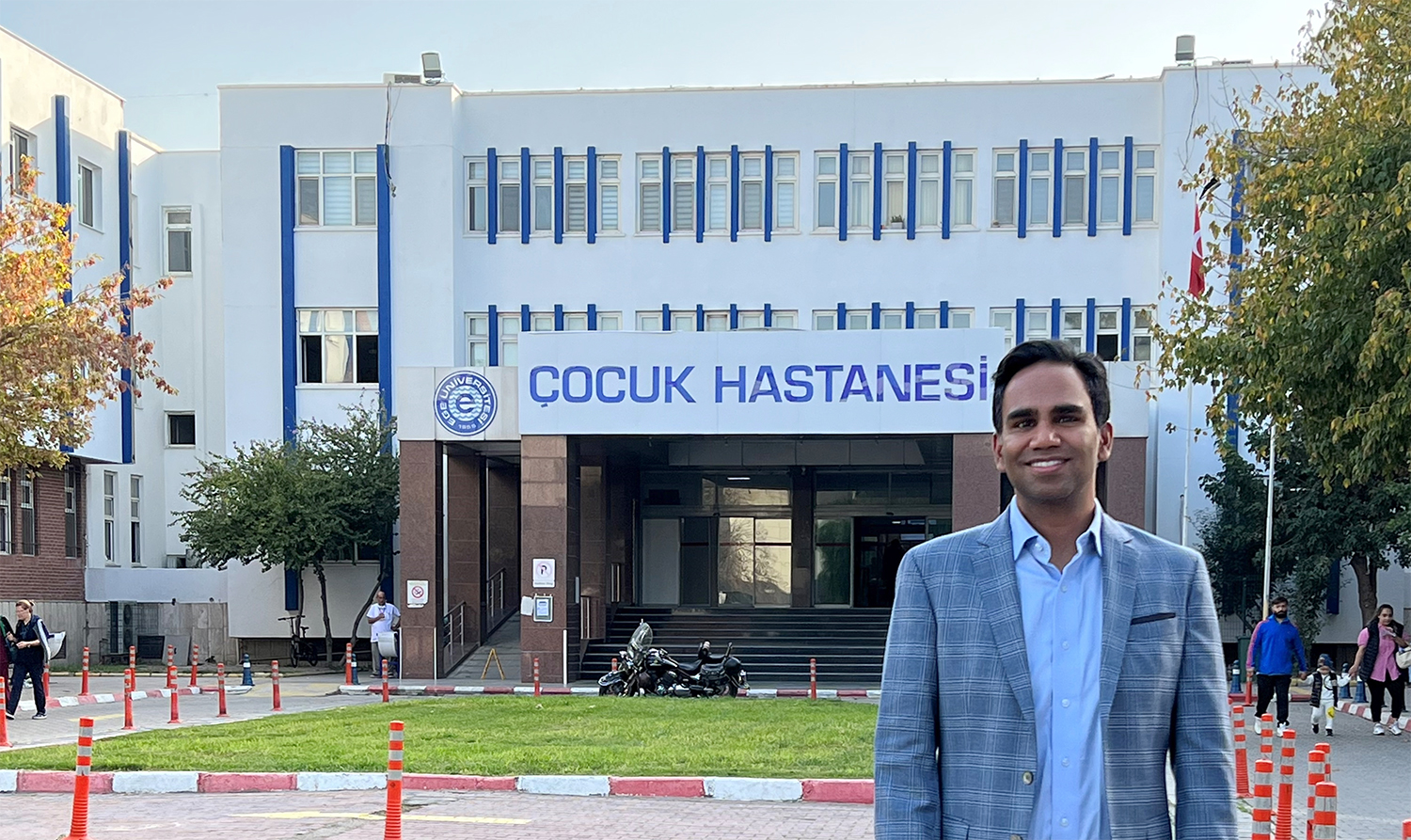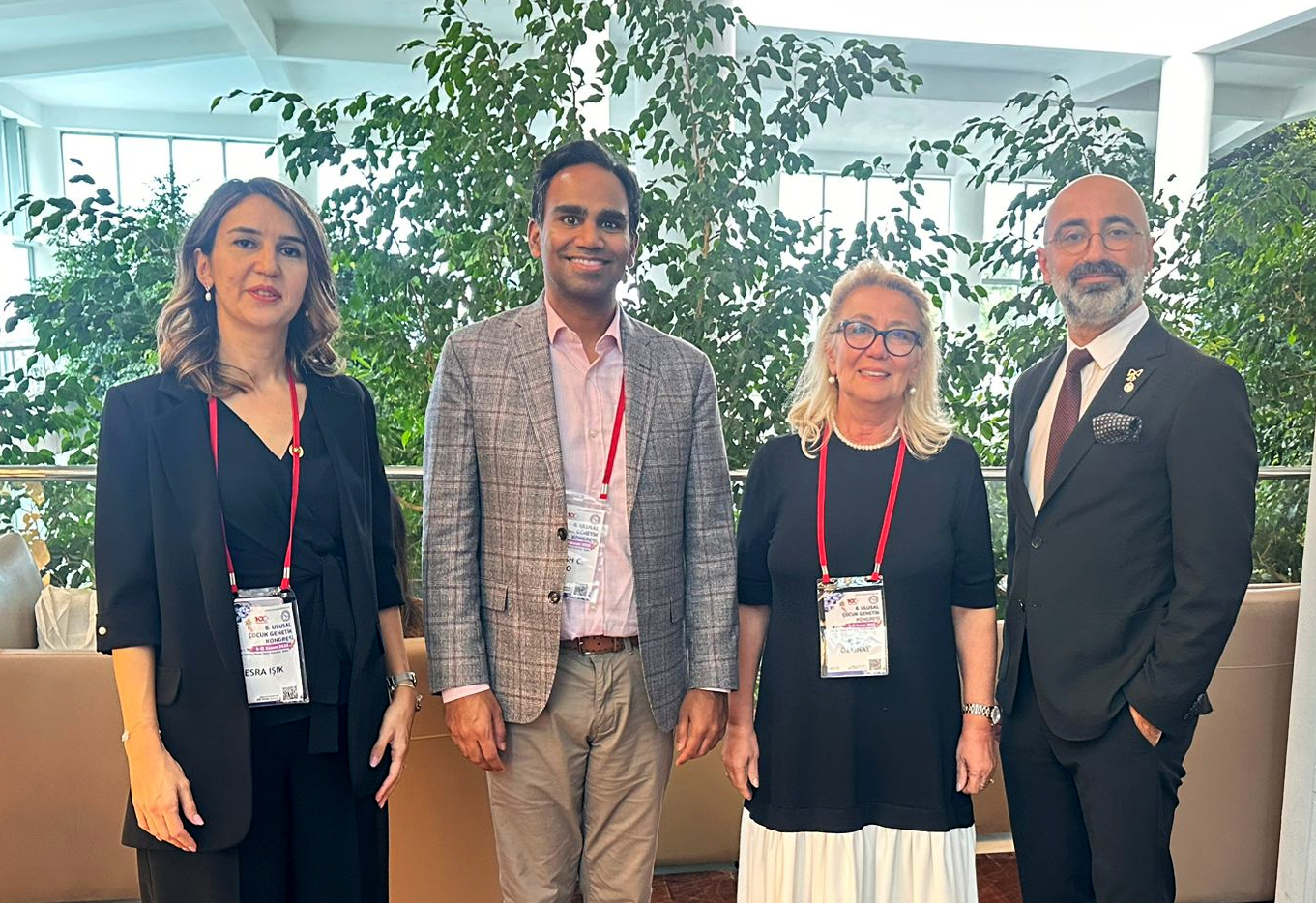Grant funds research into childhood blindness, new partnership in Turkey
November 21, 2023 / medicine.umich.edu/dept/globalreach
Funded by a Partnership Development Grant, a new collaboration in Turkey hopes to advance genetic research into rare childhood eye diseases.
A Global REACH seed grant aims to bridge stem cell biology and cutting-edge 3D retinal organoid technology to inform new research of childhood diseases that cause blindness.

Rajesh C. Rao, M.D., Leonard G. Miller Professor of Ophthalmology and Visual Sciences, and Associate Professor of Human Genetics and Pathology, is a retina surgeon and physician-scientist. He garnered a $10,000 Partnership Development Grant last fall to collaborate with colleagues at the Ege University Faculty of Medicine, in Turkey, where the team was treating a very unique patient.
“This is just one of those needle-in-a-haystack situations. The disease the patient was suffering from, Strømme Syndrome, is so incredibly rare,” Rao said. “I’m really grateful that Global REACH took a chance to fund this work.”
In his research, Rao grows retinal “organoids” (i.e., retinal mini-organs) in the lab to study rare developmental disorders that cause blindness in children, known as microphthalmia, anophthalmia, and coloboma (MAC). His group has honed in on a specific gene, CENPF, one of the most highly expressed genes in early human retinal organoids. CENPF mutations are a cause of Strømme Syndrome, a disorder associated with microphthalmia, as well as developmental abnormalities in the small intestine, brain, heart and the genitourinary systems.
However, how CENPF mutations disrupt human retinal development is unknown. The derivation of an induced pluripotent stem cell (iPSCs) line using cells from the Strømme Syndrome-affected patient would allow an ability to understand how mutated CENPF contributes to maldevelopment of the eye.
“I basically emailed a whole bunch of people around the world to see if they have access to a patient with this syndrome. The only people who responded was a group in Turkey,” Rao said. “They have a family there who was happy to participate.”
Coordinating with his Ege University colleagues to have a sample of the patient’s cells collected and shipped to Michigan Medicine took the better part of a year. Now in Ann Arbor, those rare cells will be used to create a new stem cell line from which to grow and study the CENPF-mutated retinal organoids. Research using lab-grown organoids is relatively new, and retinal organoid studies that focus on early-onset developmental diseases are a way to use organoid technology to understand mechanisms of human retinal development, to “model the disease in a dish,” and acquire knowledge that could be important for future therapeutic strategies.
“A lot of the time, stem cell technologies like organoids are used to model and/or treat eye diseases that are more common or that occur later in life, like macular degeneration, or other forms of inherited eye diseases,” Rao said. “But because organoids recapitulate events that take place very early in eye development, they can be powerful tools help us understand these rare but devastating diseases that affect the youngest among us, and that are understudied in the field.”
Most of the grant funding is being used to reprogram the donor cells to iPSC lines. With the remaining funds, Rao traveled to Turkey this month to meet his Ege colleagues in person, present at a national pediatrics genetics conference, and tour their facilities.
“There’s a lot of potential for a productive collaboration for laboratory and translational-based research using human retinal organoids to better understand rare, genetic pediatric eye malformations,” Rao said. “International collaboration is vital, since many of these conditions are so rare that you have to have contact points everywhere.”

 ON THE COVER
ON THE COVER
 ON THE COVER
ON THE COVER
 ON THE COVER
ON THE COVER
 ON THE COVER
ON THE COVER
 ON THE COVER
ON THE COVER
 ON THE COVER
ON THE COVER
 ON THE COVER
ON THE COVER
 ON THE COVER
ON THE COVER
 ON THE COVER
ON THE COVER
 ON THE COVER
ON THE COVER
